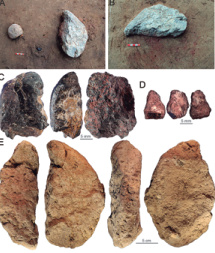

Yang points out that it is possible that other closely related human ancestors were no longer present in the vast landscapes of northern Asia although earlier groups of Homo sapiens were mixing with Neanderthals and Denisovans (extinct species of archaic human).
The Xiamabei site is in Nihewan Basin, a geographic area that is considered a center for Chinese archaeology of the Paleolithic period. Since 1965, over 500 Paleolithic sites, dating back 1.7 million to 10,000 years, were found all over the basin, which spread across northern Hebei and Shanxi provinces.
"For China, significance of this basin in terms of archaeology is what East Africa is to the world," Zhu Rixiang, an academician of the Chinese Academy of Sciences, told the National Cultural Heritage Administration conference.
He says: "Studies here will greatly improve the understanding of our ancestors: The archaic residents in East Asia may own equally advanced technology for processing raw materials as their counterparts in the western part of the Old World."
Zhu also points out that the archaeological project on Xiamabei, which involves scholars from both China and Europe, also demonstrates that archaeology can be a bridge between different cultures.